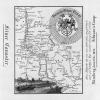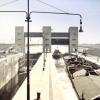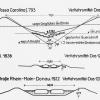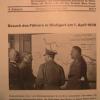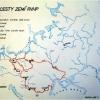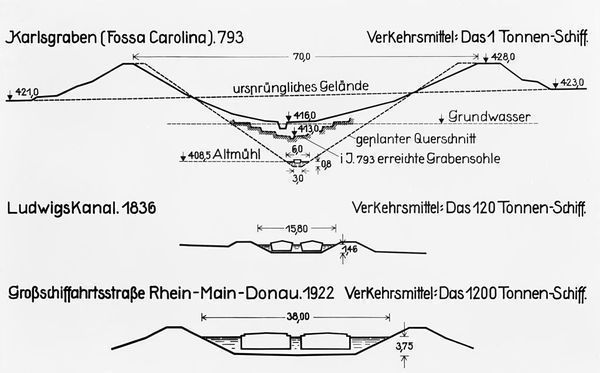Central European waterway network
The main continental watershed divides Europe into two main river basins: the Danube and the Rhine.
This division largely corresponded to the general East-West divide in Europe that has developed in various forms over centuries. By the beginning of the twentieth century, Central Europe found itself torn between the two distinctive waterway systems. These two systems were separated not only physically, but also in terms of the policy regulations and technological standards that applied to each.
Since the 1890s, interest groups throughout the region had pleaded for canals that would connect the watersheds and unify at least the basic navigation structures on either side of the divide. In 1897, they established the German–Austrian–Hungarian Association for Inland Shipping (Deutsch–Oesterreichisch–Ungarischer Verband für Binnenschiffahrt), which covered the territories of the two central European empires and Switzerland.
Though they were interrupted by the First World War and subsequent consolidation of the new nation states in the region, the idea and the organization were revived in the mid-1920s as the Central European Association for Inland Shipping.
While the plans in this period never reached the level of international negotiations, the organization's experts, like hydraulic engineers German Leo Sympher (1854–1922) and Czech Antonín Smrček (1859–1951), succeeded in implementing its standards into their national waterway development programs.
 Previous Story
Next Story
Previous Story
Next Story
How to cite this page
Jiří Janáč, 'Central European waterway network', Inventing Europe, http://www.inventingeurope.eu/story/central-european-waterway-network
Sources
- Jiří Janáč, European Coasts of Bohemia. Negotiating the Danube-Oder-Elbe Canal in a Troubled Twentieth Century. Amsterdam: Amsterdam University Press, 2012.





